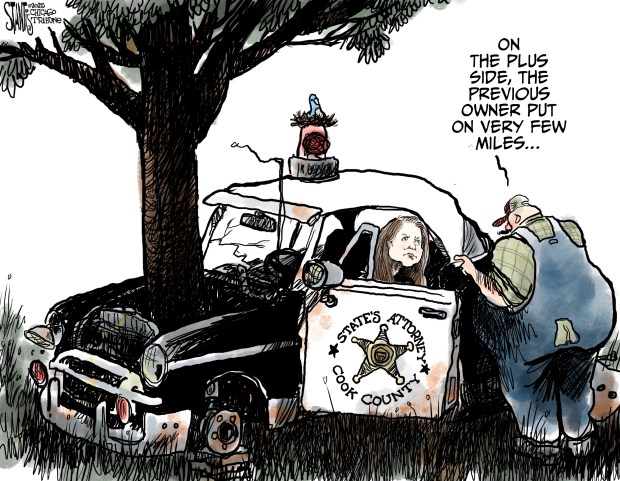One asset that sets Chicago above most other U.S. metros is its mass transit system. The region’s buses and trains, largely abandoned in the early phase of the pandemic, are once again crowded, routinely topping 1 million riders a day as people return to their offices. The number of active Ventra fare accounts is basically back to normal.
But that’s the glass is half-full take. For the half-empty take, consider that the latest ridership tally is just 64% of the pre-pandemic levels of 2019. Moreover, the Regional Transportation Authority, which oversees the CTA, Metra and Pace, is projecting a $730 million budget shortfall in 2026 as federal COVID-19-related subsidies end.
Then there’s public safety. While incidents are down from their recent peak, the violent crime rate per 1 million trips on CTA trains and buses is three times higher this year than it was in 2015, according to a WBEZ-FM 91.5 analysis. More than 40 people have been killed on CTA property since 2001, including four people who were fatally shot while asleep on a CTA Blue Line train last month.
So how do city and suburban residents see that glass? Both half full and half empty, actually. Public transportation has a loyal — and largely satisfied — customer base, with half of city and suburban residents alike rating overall service as good or excellent, according to our latest research. But nearly half (42%) say they would use mass transit more if it felt safer, and a quarter (27%) would do the same if it were more reliable.
In the city, not quite half of residents ride the bus or “L” at least once a week. Usage of shared mobility devices such as bicycles and scooters is higher, particularly among young men. Still, nothing beats the car. Almost 7 out of 10 suburbanites — and 42% of city residents — drive their own vehicle at least once every day. The American love affair with the automobile is alive and well in Chicagoland.
Our survey findings have policy implications for the RTA’s newest effort to build ridership, by setting aside traffic lanes on thoroughfares or other roadways for buses. Cities such as Miami, Minneapolis, Houston and Phoenix, the RTA points out, have more than 100 miles of transit-only or transit-priority lanes. Chicago has less than 15 miles, excluding bus-on-shoulder lanes on expressways. (The comparison is somewhat misleading since Chicago also has a 224-mile rail system.)
As a start, the RTA would like to see bus rapid transit lanes installed on North DuSable Lake Shore Drive when it is rebuilt and the 27-mile length of Western Avenue.
Most poll respondents don’t see the need, however. Only a third of Cook County residents say that public transportation should be expanded or updated in their communities, while 1 in 5 say local government should prioritize investments in mass transit over roads and highways — with more city residents (25%) wanting it than suburban residents (14%).
The effort also may not get many more people to hop on a bus. Asked why they don’t ride more, only 18% of mass transit shunners say it’s because service is too limited or unavailable where they live. Security is a higher priority. Four in 10, including 46% of city residents and 34% of those living in the suburbs, note that concern about their own safety keeps them away. Two in five in the city and suburbs also say they just don’t need public transportation.
To reduce crime and allay fears, the CTA has tripled spending since 2022 on security services and now has more than 400 unarmed guard patrolling its system, supplementing armed Chicago police officers. The agency also has more than 33,000 cameras in vehicles and stations.
Violent crime has abated since 2022, when cases hit the highest number since 2013. But over this year’s first half, reports of violent crime have increased. “There’s not a simple solution, and it’s not always connected to how much money you’re spending, but it is connected to the effectiveness,” Chicago-area state Rep. Eva-Dina Delgado recently told the Tribune.
There’s another way to get more people back on mass transit that may be more effective: Increase the ranks of office workers back at their desks to pre-coronavirus levels downtown and elsewhere, and ridership on the CTA, Metra and Pace likely would recover. This cure-all, of course, is beyond the powers of any government agency.
Whatever it takes, the public and private sectors should do whatever they can to boost mass transit usage. An affordable, reliable and safe bus and rail system is a big reason why big employers clustered in the central city. It’s an asset that makes Chicago work.
Will Johnson is the Chicago-based CEO of The Harris Poll, one of the world’s leading public-opinion research firms
Submit a letter, of no more than 400 words, to the editor here or email letters@chicagotribune.com.



